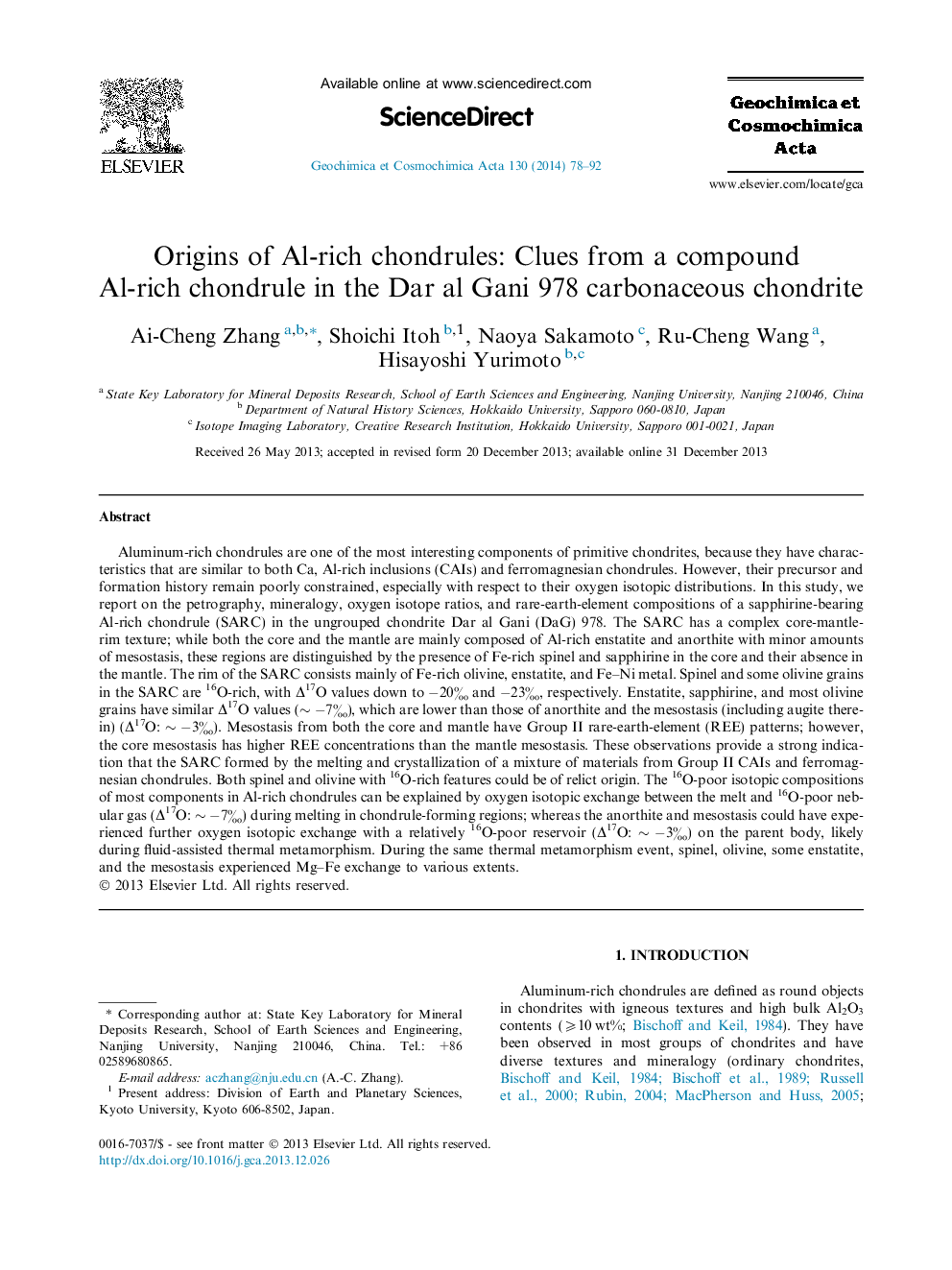| Article ID | Journal | Published Year | Pages | File Type |
|---|---|---|---|---|
| 4702163 | Geochimica et Cosmochimica Acta | 2014 | 15 Pages |
Abstract
Aluminum-rich chondrules are one of the most interesting components of primitive chondrites, because they have characteristics that are similar to both Ca, Al-rich inclusions (CAIs) and ferromagnesian chondrules. However, their precursor and formation history remain poorly constrained, especially with respect to their oxygen isotopic distributions. In this study, we report on the petrography, mineralogy, oxygen isotope ratios, and rare-earth-element compositions of a sapphirine-bearing Al-rich chondrule (SARC) in the ungrouped chondrite Dar al Gani (DaG) 978. The SARC has a complex core-mantle-rim texture; while both the core and the mantle are mainly composed of Al-rich enstatite and anorthite with minor amounts of mesostasis, these regions are distinguished by the presence of Fe-rich spinel and sapphirine in the core and their absence in the mantle. The rim of the SARC consists mainly of Fe-rich olivine, enstatite, and Fe-Ni metal. Spinel and some olivine grains in the SARC are 16O-rich, with Î17O values down to â20â° and â23â°, respectively. Enstatite, sapphirine, and most olivine grains have similar Î17O values (â¼ â7â°), which are lower than those of anorthite and the mesostasis (including augite therein) (Î17O: â¼ â3â°). Mesostasis from both the core and mantle have Group II rare-earth-element (REE) patterns; however, the core mesostasis has higher REE concentrations than the mantle mesostasis. These observations provide a strong indication that the SARC formed by the melting and crystallization of a mixture of materials from Group II CAIs and ferromagnesian chondrules. Both spinel and olivine with 16O-rich features could be of relict origin. The 16O-poor isotopic compositions of most components in Al-rich chondrules can be explained by oxygen isotopic exchange between the melt and 16O-poor nebular gas (Î17O: â¼ â7â°) during melting in chondrule-forming regions; whereas the anorthite and mesostasis could have experienced further oxygen isotopic exchange with a relatively 16O-poor reservoir (Î17O: â¼ â3â°) on the parent body, likely during fluid-assisted thermal metamorphism. During the same thermal metamorphism event, spinel, olivine, some enstatite, and the mesostasis experienced Mg-Fe exchange to various extents.
Related Topics
Physical Sciences and Engineering
Earth and Planetary Sciences
Geochemistry and Petrology
Authors
Ai-Cheng Zhang, Shoichi Itoh, Naoya Sakamoto, Ru-Cheng Wang, Hisayoshi Yurimoto,
